Details of the installation of the gearbox housing
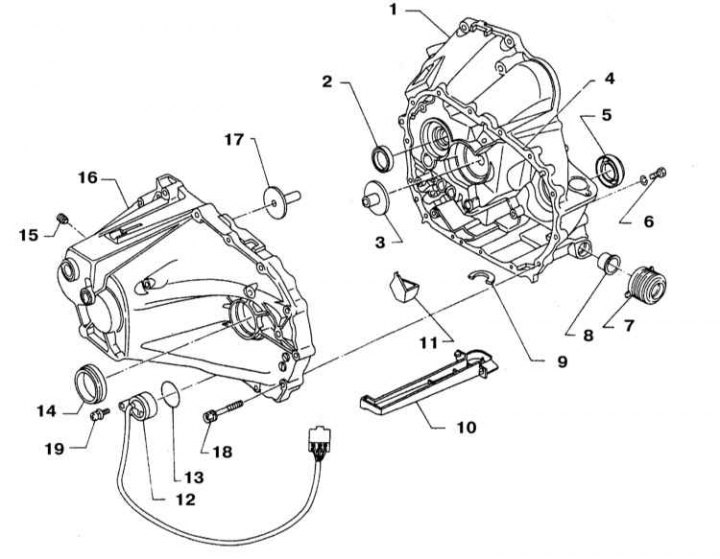
1 - Clutch dome; 2 - Oil seal; 3 - Oil flow (output shaft); 4 - The surface of the clutch dome mated with the crankcase of the manual transmission; 5 - Drive shaft seal; 6 - Bolt (20÷29 Nm); 7 - Anther; 8 - Sealing cuff; 9 - Magnetic segment; 10 - Oil chute; 11 - Oil pocket; 12 - Sensor-switch of reversing lights; 13 - O-ring; 14 - Drive shaft seal; 15 - Drain plug (25÷34 Nm); 16 - Carter manual transmission; 17 - Oil flow (input shaft); 18 - Bolt (16÷21 Nm); 19 - Clamping bolt (3.7÷5.0 Nm)
Removing
1. Remove the battery from the tray (see chapter Engine electrical equipment).
2. Remove the air cleaner with MAF sensor and air intake (see chapter Power and exhaust systems).
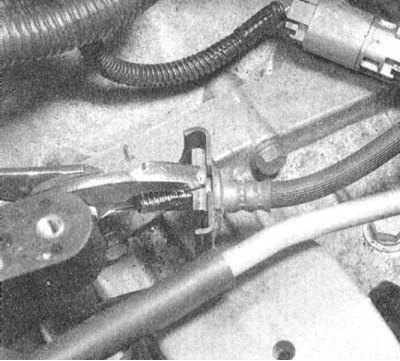
3. Remove the clutch slave cylinder from the gearbox housing (see chapter Clutch and drive shafts). Release the lock and release the clutch hydraulic line from its support bracket on the gearbox housing.
Attention! Do not depress the clutch pedal with the slave cylinder removed.
4. Disconnect wiring from VSS (see Section Replacement of oil seals). Disconnect the ground straps.
5. On models since 1995, no. remove crankshaft position sensor (see chapter Engine management systems).
6. Remove the starter assembly from the gearbox housing (see chapter Engine electrical equipment).
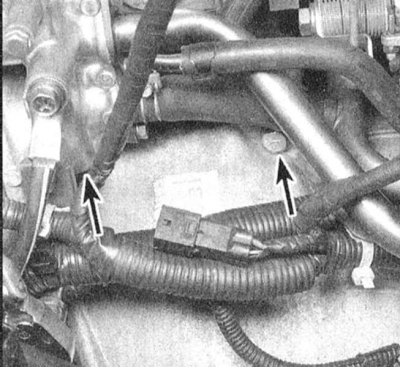
7. Turn out the top bolts of fastening of a case of a transmission.
Note. The transmission-to-engine bolts are of varying lengths and are not interchangeable, so they must be clearly marked when removed.
8. Loosen the front wheel nuts. Jack up the car and place it on jack stands. Remove the front wheels.
9. Disconnect the electrical wiring from the sensors-switches of the reversing lights and opening the starter circuit (see Section Check and replacement of the gauge-switch of reversing lights).
10. Remove the section of the exhaust system passing under the power unit (see chapter Power and exhaust systems).
11. Drain gear oil (see chapter Settings and ongoing maintenance).
12. Disconnect the support rod and shift control rod from the transmission (see Section Removal and installation of components of a drive of a gear change).
13. Remove drive shafts (see chapter Clutch and drive shafts).
14. Support the engine with a jack (to distribute the load, lay a block of wood between the head of the jack and the oil pan). The engine must remain jacked up the entire time the transmission is removed from the vehicle.
15. Support the transmission with a trolley jack and secure it to the jack with safety chains.
16. Remove the center cross member that runs under the powertrain assembly.
17. Slightly raise the assembly of the power unit and disconnect the left support of its suspension. With the corresponding vehicle configuration, also remove the bolts securing the engine crankcase to the transmission (see chapter Engine).
18. Turn out the remained bolts of fastening of a dome of coupling to the block of the engine.
19. For the last time, make sure that all communications are disconnected and nothing prevents the separation and removal of the gearbox.
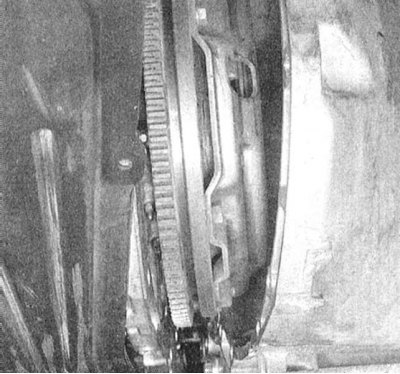
20. Lower the jack supporting the engine and begin to shift the manual transmission assembly to the side, separating it from the unit. After the pin of the input shaft is completely released from the hub of the clutch disc, lower the assembly and remove it from under the car. Try, if possible, not to tilt the gearbox removed from the vehicle.
21. Take this opportunity to check the condition of the clutch components (see chapter Clutch and drive shafts). It is good practice to replace the clutch regardless of its current condition.
Installation
1. If removed, reinstall clutch components (see chapter Clutch and drive shafts).
2. Fix the transmission on the jack, as you did during the dismantling process, and carefully drive it under the car, lifting it to its regular position. Gently engage the input shaft with the splines of the hub of the clutch disc, make sure that the guide pins fall into the mating holes in the mating surface of the engine. Never use force - if the input shaft does not enter the clutch disc hub, adjust the angle of the gearbox and slightly rotate the shaft, achieving the correct alignment of the splines.
Attention! In no case do not tighten the skewed gearbox to the engine with the fixing bolts - this can lead to irreversible failure of the components!
3. Screw bolts of fastening of manual transmission to the engine. Tighten fasteners to the required torque.
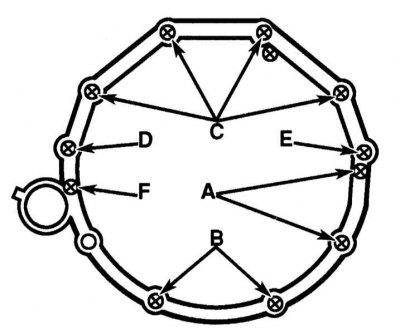 | 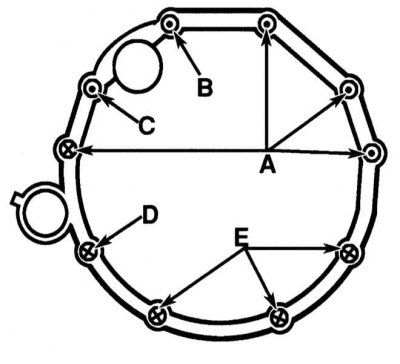 |
4. Connect powertrain suspension support (make sure fasteners are securely tightened).
5. Reinstall the transmission hanger and cross member.
6. Remove the jacks supporting the box and engine. Reinstall all the components that were removed during the dismantling of the transmission (see respectively Chapters Power and exhaust systems, Engine electrical equipment and Engine management systems).
7. Make sure the electrical and hydraulic lines are properly connected and routed. Make sure that the correct amount of gear oil of the required grade is poured into the gearbox (see chapter Settings and ongoing maintenance). Lower the car to the ground.
8. Connect the negative cable to the battery. Drive the vehicle, check the engine and transmission for signs of leaks.